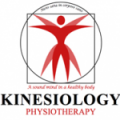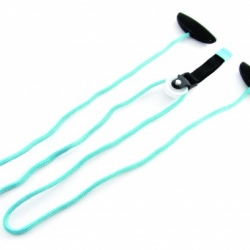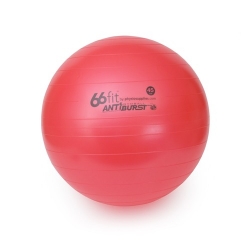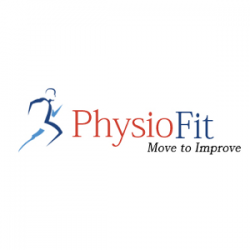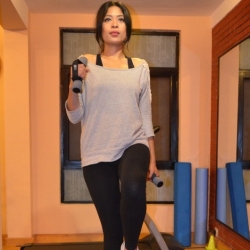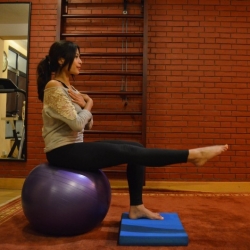Manual Therapy
A physiotherapist’s hands are his biggest assets. Our physiotherapists 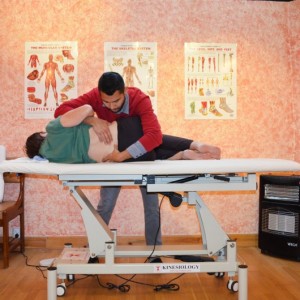 are specially trained in manual techniques to influence tissue healing through:
are specially trained in manual techniques to influence tissue healing through:
- Mobilisations & Tractions
- Manipulations
- Myofascial Therapy
- Deep Transversal Frictions
- Manual Stretching
Exercise Therapy
Exercise Therapy in a medical setting plays a major role in the treatment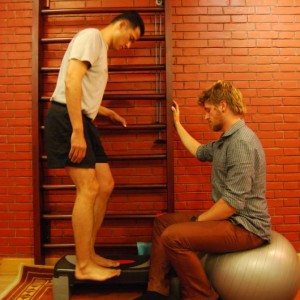 of musculoskeletal disorders. We prescribe individually adapted exercises to guide you through the rehabilitation.
of musculoskeletal disorders. We prescribe individually adapted exercises to guide you through the rehabilitation.
- Proprioception
- Stabilization
- Core Stability
- Strengthening
- Flexibility/Stretching
- Coordination
- Medically Supervised Reconditioning
- Respiratory Training
Electrotherapy
Our brains send and receive electrical impulses through our nervous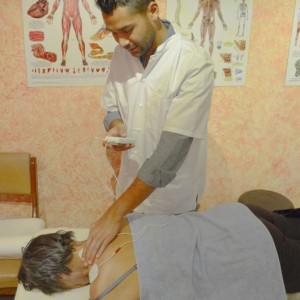 system to interpret stimuli and respond accordingly. Electrotherapy uses electrical energy for two purposes: (1) to reduce the sensation of pain and (2) stimulate motor neurons to activate specific muscles.
system to interpret stimuli and respond accordingly. Electrotherapy uses electrical energy for two purposes: (1) to reduce the sensation of pain and (2) stimulate motor neurons to activate specific muscles.
- Transcutaneous Electrical Nerve Stimulation (TENS): Using a strong but comfortable sensation through nerve stimulation TENS allows us to achieve pain relief.
- Electrical Muscle Stimulation:
- Electrical Nerve Stimulation
Ultrasound Therapy
Ultrasound uses high frequency sound waves which 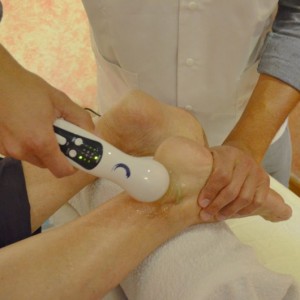 generates localized deep heat to the underlying tissues increasing blood flow to the area. Better circulation results in faster regeneration of damaged tissue in muscle, tendon and ligament.
generates localized deep heat to the underlying tissues increasing blood flow to the area. Better circulation results in faster regeneration of damaged tissue in muscle, tendon and ligament.
Heat & Cryo Therapy
By applying deep heat we can enhance healing of damaged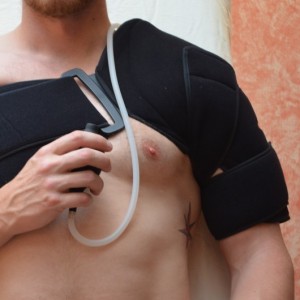 tissue. Cryotherapy uses cold substances (ice, cooling pads,…) to help reduce the inflammatory process.
tissue. Cryotherapy uses cold substances (ice, cooling pads,…) to help reduce the inflammatory process.
- Cold Compression Cuffs
- Infrared Therapy
(Sports) Taping
Taping techniques are generally used for musculoskeletal afflictions. 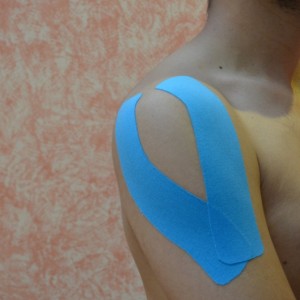 Taping stabilizes the joint, regulates muscle tone and enhances proprioception.
Taping stabilizes the joint, regulates muscle tone and enhances proprioception.
- Conventional Taping
- Kinesiotaping
- McConnell Taping
Neurological Retraining
Neurological Retraining focuses on regaining function, preventing 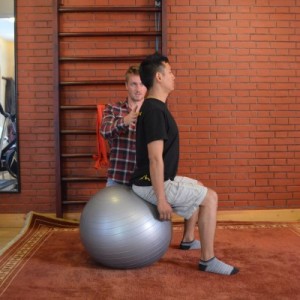 further complications and increasing independent ADL skills (Activities of Daily Living), quality of life and social opportunities.
further complications and increasing independent ADL skills (Activities of Daily Living), quality of life and social opportunities.
- Gait and transfer retraining (walking, sit to stand, wheelchair to bed, …)
- Support in the use of Assistive Devices such as orthosis, crouches, braces, …
- Fall Prevention Training
- Neuro-cognitive retraining
- Neural mobilizations
- Cueing and cognitive strategies (Parkinson’s Disease)
- Vestibular repositioning maneuvers (BPPV)
- PNF (Proprioceptive Neuromuscular Facilitation)




